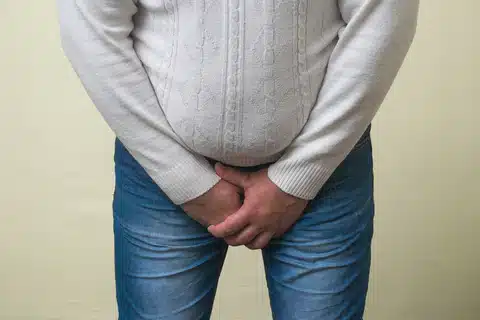Urinary incontinence is the clinical term for inconvenient, involuntary urine leaks. Many women experience urinary incontinence and it is far more common than most people would expect. In fact 1 in 4 women over 18 will experience urinary incontinence.
Unfortunately, even though there are plenty of treatment options available for urinary incontinence, there are a lot of widespread myths about urinary incontinence in women. Today we are going to discuss the top 5 myths about urinary incontinence.

1: Urinary Incontinence is Part of Ageing
The most common myth when it comes to urinary incontinence is that it is inevitable. Too many people think that, as they age, their bodies are bound to lose the ability to hold urine. While ageing is a risk factor for incontinence, it is not a normal part of ageing.
Unfortunately, incontinence is one of the most common reasons older women end up in nursing homes. Incontinence, however, is not the end of the road. Incontinence can be treated and even reversed. Further, there are plenty of incontinence items that can help you manage your condition available.

2: Incontinence Can Only Be Managed Not Treated
Unfortunately, too many people assume that there are no treatment options available for urinary incontinence. However, this couldn’t be further from the truth. But this myth keeps women from going to their doctors to seek an answer and treatment.
While there are plenty of incontinence products available to help you manage your condition, it is important that you discuss your concerns with your doctor. They might be able to help you better treat or even cure your urinary incontinence.

3: Incontinence Can Only Be Fixed with Surgery
While some people don’t believe there is any cure for incontinence, others believe that super invasive surgery is the only way to fix incontinence. However, there are plenty of non-surgical options for urinary incontinence. Behavioural therapy is one of the most important non-surgical treatments for incontinence.
These behavioural therapies include:
Pelvic floor training
Pelvic floor exercises or Kegel exercises can help you build muscle control and prevent urinary leakage.
Bladder training
Bladder training involves gradually extending the length between bathroom trips in order to help control issues with urge incontinence.
Relaxation exercises
Relaxation and meditation are important in your life, no matter what you are dealing with. It is most important when it comes to urge incontinence. For example, taking slow, deep breaths can help calm the urge to urinate until you reach a bathroom.
Dietary modifications
You would be shocked how many diuretics you consume every day. This includes tea, coffee and soft drinks. Caffeine can also cause urge incontinence. Decreasing the amount of caffeine and diuretics can help reduce your risk of leakage.
Medications
This is why it is important to discuss your condition with your doctors. There are some medications available that can help control your incontinence, including bladder muscle control.

4: Doctors Can’t Help with Incontinence
Some women may want to seek treatment for their urinary incontinence. However, it can be difficult to know where to turn. Your first step is to discuss the issue with your GP. If you are not experiencing incontinence due to a side effect of medication, then your GP can refer you to a specialist.
This specialist is known as a urogynecologist. They specialise in both the urinary system and gynaecological treatments. These specialists can help you live better, with improved quality of life.
This is a relatively new field and a unique speciality. This is the reason why the average person doesn’t know to contact a urogynecologist. Speaking to your doctor can save you issues in the future, improve your quality of life, and help you find a better treatment option. Your incontinence could be easily reversible. Put aside the embarrassment of talking to your doctor and embrace a better quality of life!

5: You Need to Run to the Bathroom
If you suffer from urge incontinence, then you likely feel like you need to make a beeline for the bathroom. However, when it comes to urge incontinence, it is unlikely that you can make it to the bathroom in time.
If you feel you have a strong urge, then stop and take a deep breath. Use a strong Kegel contraction to contract your pelvic floor muscles. The contraction will break the bladder spasm. Then, you can walk safely to the bathroom. If you are still practicing your pelvic floor and Kegel exercises, then you can wear some incontinence pads to add some extra protection.
What is Stress Incontinence?
Stress incontinence refers to the leakage that occurs when you exert yourself. This can mean leakages when you cough, laugh, sneeze, etc.
What is Urge Incontinence?
Urge incontinence is described as sudden leaking for no apparent reason. You simply get a very strong urge to urinate.
Are you suffering from urinary incontinence? Explore the range from Holistic Incontinence today. Our team can help you choose the right product for your needs and they can be discreetly shipped to your home!
